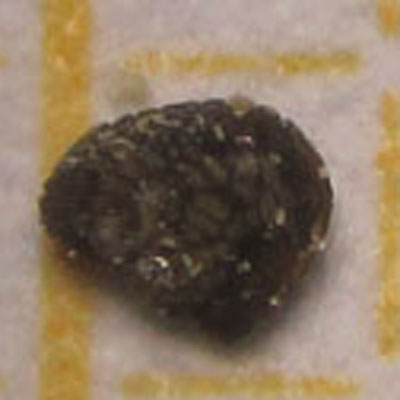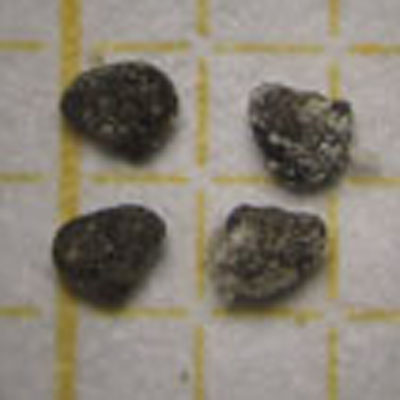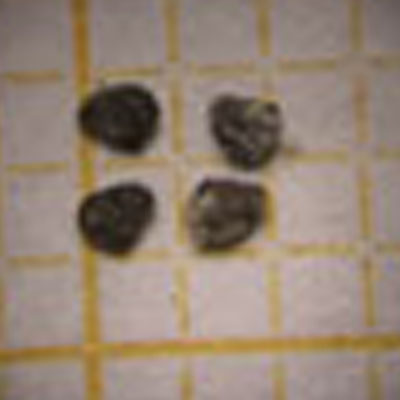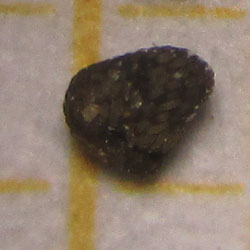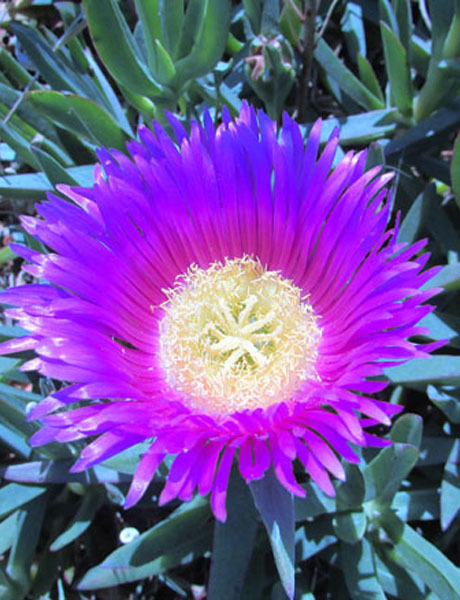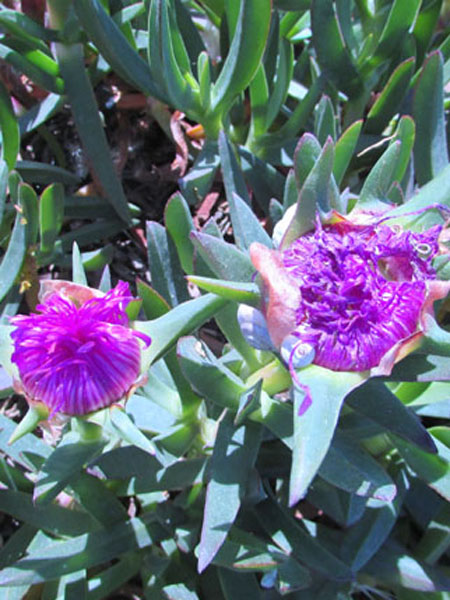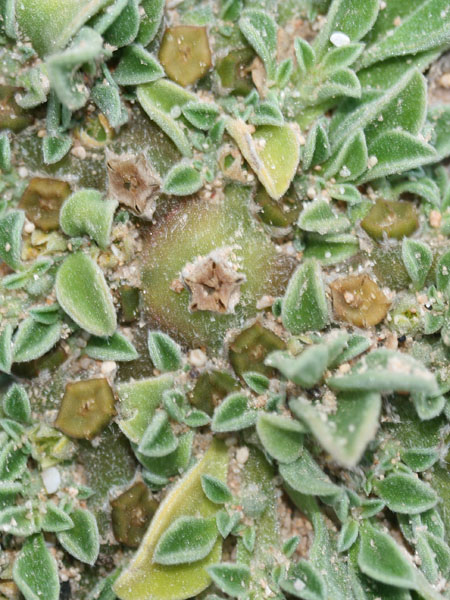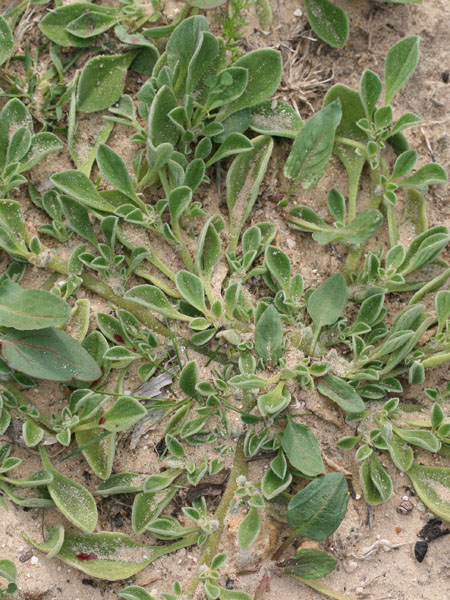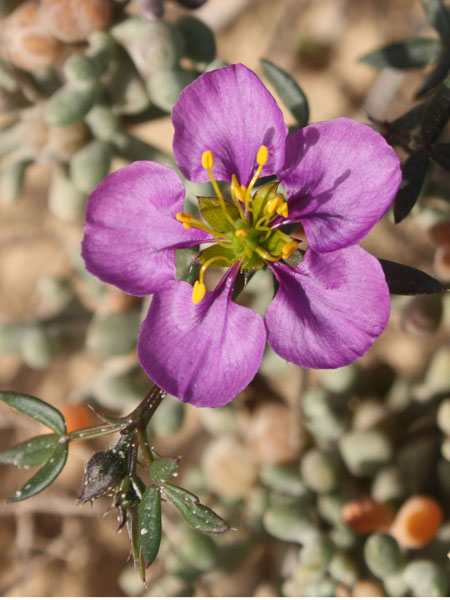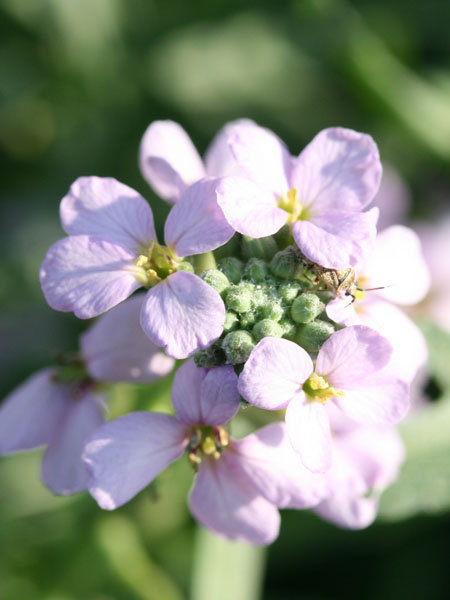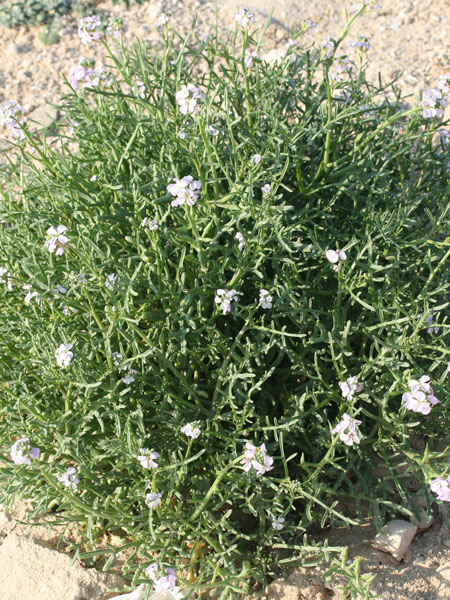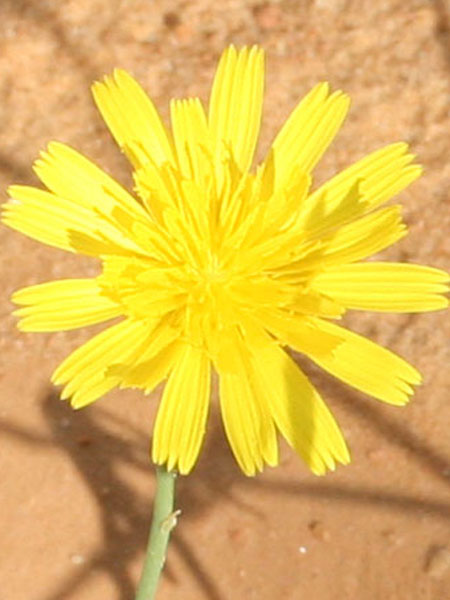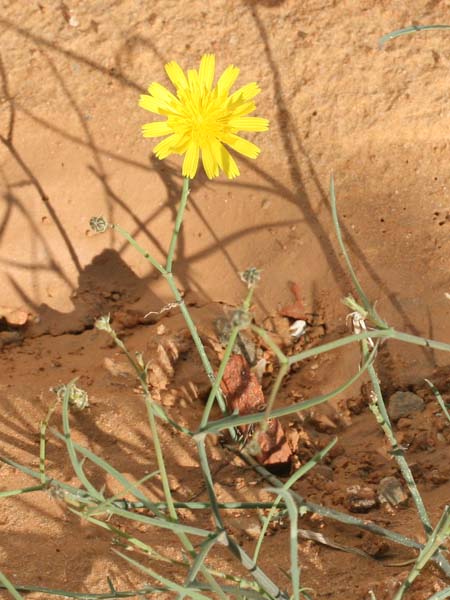Mesembryanthemum crystallinum
Kingdom : Plantae / النّباتات
Division : Spermaphyta / البذريات
Clade : Magnoliophyta or Angiospermae / مستورات البذور
Class : Eudicotyledoneae / ذات الفلقتين
Order : Caryophyllales / رتبة القرنفليات
Family : Aizoaceae /الفصيلة المليحيّة
Genus : Mesembryanthemum
species : crystallinum
Chromosomes: 2n=18
Protologue
L., Sp. Pl., ed. 1, 480 (1753)
Common names
Tunisia Arabic English French Tamazight
غيسول (Mehdia)
غاسول (Monastir, Djerba)
نبات الثّلج
Common ice plant
Crystalline ice plant
Ficoïde glaciale
La glaciale
Figue glaciale
Toxic
no
Edible
yes
Latex
no
Botanic description
Genus description
"Calyx flowers consisting of 5 sepals, welded at the base between them and with the ovary. Many linear petaloid staminodes. ? tamines many inserted in several rows. Carpels 5-12. Capsule at 5 angles, umbilicated. first fleshy, then lignifying and opening in star. Succulents.
Species description
"Plant with creeping port, the height of which does not exceed 7 or 8 cm, 1 m long, fleshy, glabrous, covered in all its parts with crystalline tubercles.
Stems Lying-ascending, branching-dichotomous, can reach 20 to 60 cm long, are branched and drooping, covered with tiny sparkling "pearls", consisting of hypertrophied, vitrified cells, containing large amounts of water. Leaves with broad trinervated petiole, the caulinae alternate, sessile, 2 to 10 cm long, have a strongly undulating surface are ovate to spatulate, apex acute or obtuse, margins strongly papillous whitish, subsessile. Flowers white, solitary, subsessile, axillary and terminal (diam: 7-10 mm). The base of the flower then the fruit carries "pearls" full of water of rather large size. The sepals are oval, flat, the outer ones about 1 cm wide, the petals linear, longer than the calyx. Fruits at 5 angles, umbilicated at the top. Seeds small black seeds.
Botanic References
Pottier-Alapetite G. (1981). Flore de la Tunisie Angiospermes –Dicotylédones (Apétales- Dialypétale , Première partie). Imprimerie Officielle de la République Tunisienne (Eds), 80p. www.theplantlist.org
Biology
Life form Annual or biennial Type form Therophyte Photosynthesis C3,CAM
Phenology
Blooming
JanuaryFebruaryMarchAprilMayJuneJulyAugustSeptemberOctoberNovemberDecember
Fruiting
JanuaryFebruaryMarchAprilMayJuneJulyAugustSeptemberOctoberNovemberDecember
Map Localization
Ecology
Adaptation Grows on maritime sands, salty depressions and rubble rich in nitrates. Salt bladder yes Invasive yes
Geographical distribution
Localization Biocimatic stage Annuel pluviometry (mm) GPS Djerba (déc. 2013) Higher arid 209 33°49'55.13"N / 10°44'54.35"E Monastir (Skanès, Déc.2013) Inferior semi-arid 331 35°46'42.62"N / 10°47'37.46"E Monastir (Sidi Ghedemssi Déc.2014; Fév.2016)) Inferior semi-arid 331 35°46'58.18"N / 10°49'59.65"E
General uses
It is cultivated for ornamentation and as an equivalent of spinach, its leaves are edible. The seeds can also be eaten. Crushed leaves can be used as a substitute for soap to clean clothes, hence the Arabic-name "Ghassoul" (cleaner).
Medicinal uses
"Recognized for its softening and healing properties, the icy cold is recommended against convulsive coughs and congested bronchi. It is used in the treatment of tuberculosis and pulmonary diseases it is also used for skin care (burns, wounds or punctures).
NOTE : This website is not that of herbal medicine and assumes no responsibility for the negative effects of the use of plants. Seek advice from a professional before using a medicinal plant.
Systems / Organs / Effects
Respiratory System Mouth / Teeth Eays Antiseptic Antiinflammatory Astringent Hypoglycemic Anti-cancer Liver Skin
Test results
TPC DPPH ABTS+ FRAP Year mg GAE g-1 MS CI50 g ml-1 CI50 g ml-1 CE50 g ml-1 11,25± 0,50 1509,54± 24,37 2141,39± 7,92 5492,33± 26,63 2016 Total Phenols content(TPC), Anti-radical potentialities against (DPPH, ABTS), Ferric reducing antioxidant power(FRAP)
Molecules : ADN / Proteins
Chromosomes : 18 Uniprot NCBI
Tunisian references
Bouftira I, Chedly A, Souad S (2012) Antioxidant and Antibacterial Properties of Mesembryanthemum crystallinum and Carpobrotus edulis Extracts Advances in Chemical Engineering and Science, 2, 359-365. Bouftira Ibtissem,Mgaidi Imen, and Sfar Souad (2010) Dosage of 2,6-Bis (1.1-Dimethylethyl)-4-Methylphenol (BHT) in the Plant Extract Mesembryanthemum crystallinum. Hindawi Publishing Corporation Journal of Biomedicine and Biotechnology Volume 2010, Article ID 142486, 5 pages Chaieb M et Boukhris M. (1998). Flore succinte et illustrée des zones arides et sahariennes de Tunisie. Association pour la protection de la nature et de l’environnement, Sfax. 183 p. Ksouri R, Megdiche W, Falleh H, Trabelsi N, Boulaaba M, Smaoui A and Abdelly C.(2008). Influence of biological, environmental and technical factors on phenolic content and antioxidant activities of Tunisian halophytes. Comptes Rendus Biologies. 331, 11, 865-873.
Other references
Gil R, M. Boscaiu, Lull C, Bautista I, Lidon A and Vicente O.(2013) Are soluble carbohydrates ecologically relevant for salt tolerance in halophytes?. Functional Plant Biology. 40, 8-9, 805-818. Grigore M-N, Constantin Toma. (2010). Salt-secreting structures of Halophytes. An integrative approach (in Romanian). Link: https://archive.org/details/ SALTSECRETINGSTRUCTURESOFHALOPHYTES.AnIntegr... Ibdah M, Krins A, Seidlitz HK, Heller W, Strack D and Vogt T.(2002) Spectral dependence of flavonol and betacyanin accumulation in Mesembryanthemum crystallinum under enhanced ultraviolet radiation. Plant Cell and Environment. 25, 9, 1145-1154. Kluge C, Lamkemeyer P, Tavakoli T, Golldack D, Kandlbinder A and Dietz KJ.(2003) cDNA cloning of 12 subunits of the V-type ATPase from Mesembryanthemum crystallinum and their expression under stress. Molecular Membrane Biology. 20, 2, 171-183. Tsukagoshi H, Suzuki T, Nishikawa K, Agari S, Ishiguro S and Higashiyama T.(2015). RNA-Seq Analysis of the Response of the Halophyte, Mesembryanthemum crystallinum (Ice Plant) to High Salinity. Plos One. 10, 2. Van Oosten MJ and Maggio A. (2015). Functional biology of halophytes in the phytoremediation of heavy metal contaminated soils. Environmental and Experimental Botany. 111, 135-146. Slesak I, Miszalski Z. (2003).Superoxide dismutase-like protein from roots of the intermediate C3-CAM plant Mesembryanthemum crystallinum L. in in vitro culture. Plant Sci. 164, 497–505. Barkla, BJ and R Vera-Estrella (2015) Single cell-type comparative metabolomics of epidermal bladder cells from the halophyte Mesembryanthemum crystallinum. Frontiers in Plant Science. 6.




























